Slideshow: What Your Nails Say About Your Health

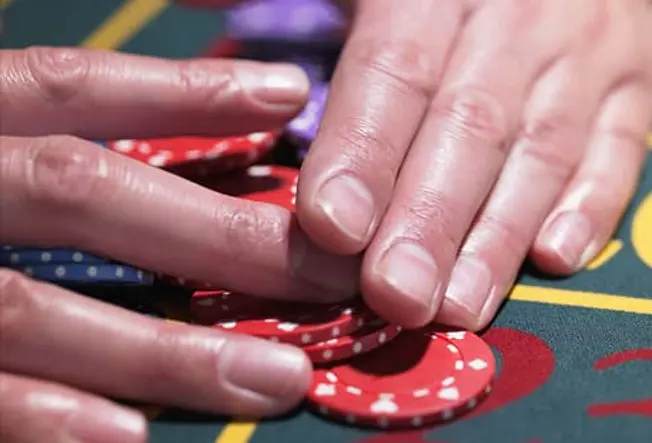
Nails and Health: Read the Signs
Did you know your nails can reveal clues to your overall health? A touch of white here, a rosy tinge there, or some rippling or bumps may be a sign of disease in the body. Problems in the liver, lungs, and heart can show up in your nails. Keep reading to learn what secrets your nails might reveal.
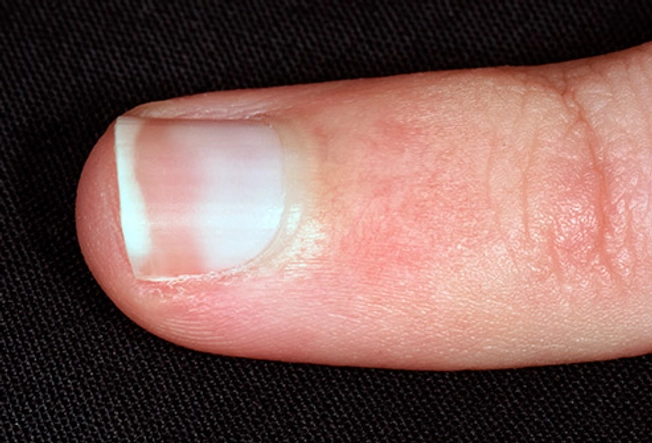
Pale Nails
White nails, also known as leukonychia, describes fingernails that are partially or completely white in color. The white color could be the result of several things such as trauma, anemia, dietary deficiencies, heart or kidney disease, or even poisoning.
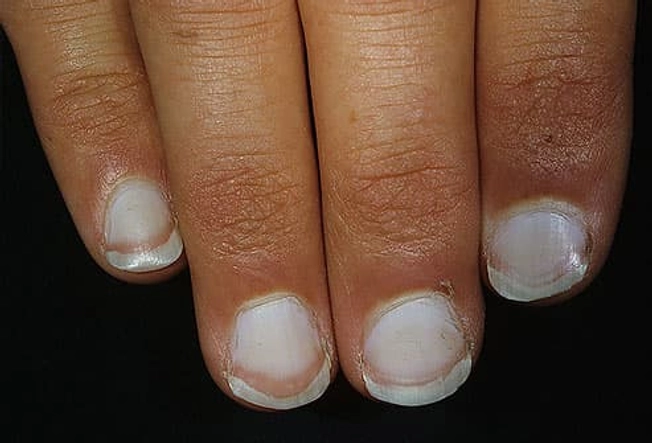
White Nails
If the nails are mostly white with darker rims, this can indicate liver problems, such as hepatitis. In this image, you can see the fingers are also jaundiced, another sign of liver trouble.

Yellow Nails
One of the most common causes of yellow nails is a fungal infection. As the infection worsens, the nail bed may retract, and nails may thicken and crumble. In rare cases, yellow nails can indicate a more serious condition such as severe thyroid disease, lung disease, diabetes or psoriasis.
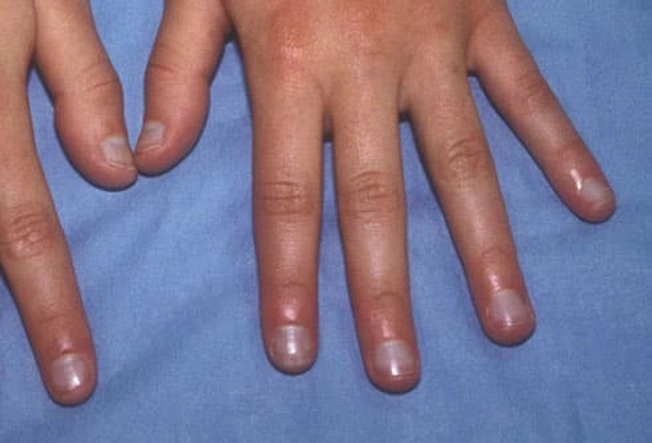
Bluish Nails
Nails with a bluish tint can mean the body isn't getting enough oxygen. This could indicate a lung problem, such as emphysema. Some heart problems can be associated with bluish nails.
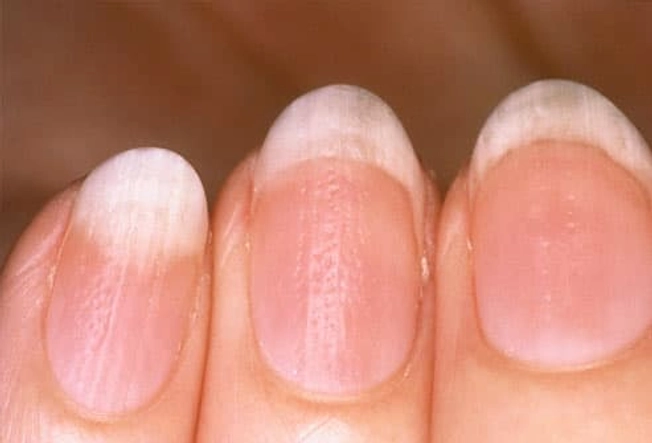
Rippled Nails
If the nail surface is rippled or pitted, this may be an early sign of psoriasis or inflammatory arthritis. Discoloration of the nail is common; the skin under the nail can seem reddish-brown.

Cracked or Split Nails
Dry, brittle nails that frequently crack or split have been linked to thyroid disease. Cracking or splitting combined with a yellowish hue is more likely due to a fungal infection.
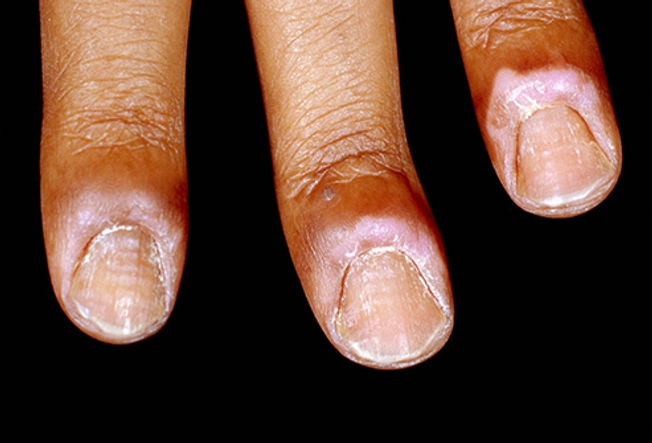
Puffy Nail Fold
Chronic paronychia is a condition that causes inflammation, redness, tenderness, and swelling of the skin folds and tissues surrounding the nails. It is usually the result of irritants or allergens but it can be caused by the fungus Candida albicans, other infections or psoriasis. It can usually be treated with topical steroids.
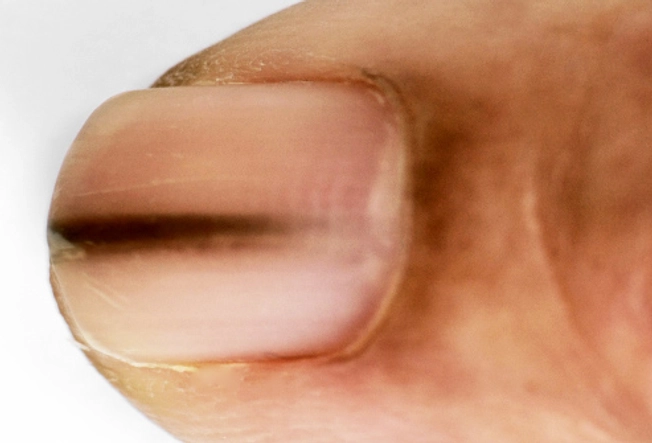
Dark Lines Beneath the Nail
This nail discoloration is called a melanonychia and is caused by the pigment melanin. There are several possible causes including skin cancer, infection or injury.

Gnawed Nails
Biting your nails may be nothing more than an old habit, but in some cases it's a sign of persistent anxiety that could benefit from treatment. Nail biting or picking has also been linked to obsessive-compulsive disorder. If you can't stop, it's worth discussing with your doctor.
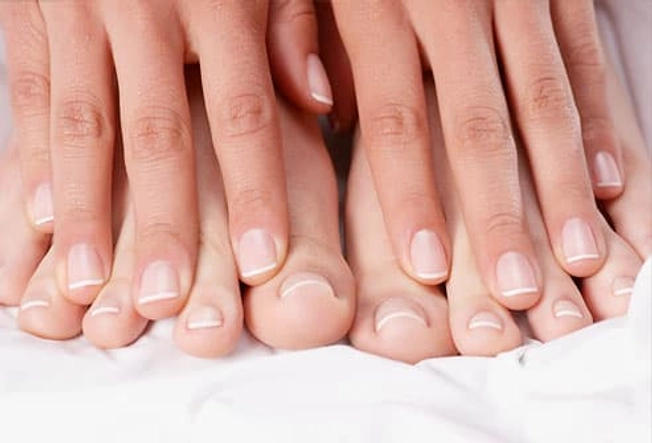
Nails Are Only Part of the Puzzle
Though nail changes accompany many conditions, these changes are rarely the first sign. And many nail abnormalities are harmless -- not everyone with white nails has hepatitis. If you're concerned about the appearance of your nails, see your doctor or a dermatologist.
IMAGES PROVIDED BY:
(1) John Howard / Digital Vision / Getty Images
(2) SCIENCE PHOTO LIBRARY / Science Source
(3) Copyright Interactive Medical Media LLC
(4) Copyright Interactive Medical Media LLC
(5) Copyright © ISM / Phototake -- All rights reserved.
(6) Copyright © Pulse Picture Library/CMP Images / Phototake -- All rights reserved.
(7) Copyright Interactive Medical Media LLC
(8) SCIENCE PHOTO LIBRARY / Science Source
(9) SCIENCE PHOTO LIBRARY / Science Source
(10) Copyright Interactive Medical Media LLC
(11) Glowimages / Getty Images
REFERENCES:
American Academy of Dermatology.
American Family Physician.
Christine Laine, MD, MPH, senior deputy editor, Annals of Internal Medicine; spokesman, American College of Physicians.
Joshua Fox, MD, director, Advanced Dermatology; spokesman, American Academy of Dermatology.
Mount Sinai Medical Center.
National Skin Centre.
Tamara Lior, MD, dermatologist, Cleveland Clinic Florida.
National Library of Medicine
DermNet NZ
American Academy of Family Physicians
Merck Manual
American Osteopathic College of Dermatology